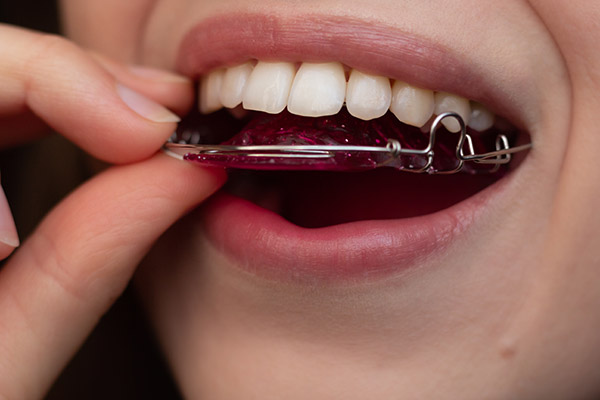 Maintaining the position of the teeth after orthodontic treatment requires the use of dental
retainers. Read on to learn about the different types of retainers available. As soon as the braces or aligners come off, your teeth will begin repositioning themselves to where they were before treatment. To avoid relapse, you should use retainers. They are unique to each patient's mouth and ensure that your smile will look great and remain well-aligned for several years to come.
Maintaining the position of the teeth after orthodontic treatment requires the use of dental
retainers. Read on to learn about the different types of retainers available. As soon as the braces or aligners come off, your teeth will begin repositioning themselves to where they were before treatment. To avoid relapse, you should use retainers. They are unique to each patient's mouth and ensure that your smile will look great and remain well-aligned for several years to come.
The different types of retainers after orthodontic treatment
An imprint of the patient's teeth in their present position (post orthodontic treatment) is needed to create a retainer. Plaster impressions or molds of the teeth are then made to replicate their precise form and position. It all depends on the kind of retainer option the orthodontist recommends — the retainer may be created in the dental office in as little as 30 minutes or in a dental lab using the mold. The latter takes about a week.
Retainers come in a variety of forms, each serving a specific purpose. During a consultation with the orthodontist, they will go over all of the choices and help patients choose the ideal retainer for their situation.
Clear retainer
Clear retainers are the most popular form of retainer. After completing orthodontic treatment, the retainers are generally created the same day. The plaster cast of the teeth is produced using a plastic substance. The creation process means getting a replacement is also just as convenient.
Hawley retainers
Previously, Hawley retainers were a frequent post-orthodontic treatment option. The retainer consists of a wire attached to the front of the teeth, and an acrylic substance is used for the palate. A Hawley retainer is identical to a clear retainer in terms of functionality, but it is more obvious.
Fixed retainers
The orthodontist bonds a thin wire to the rear side of the front teeth to produce fixed or bonded retainers. It is called a fixed retainer because it is only removable by the orthodontist, not the patient. Parents of young patients may find fixed retainers appealing since they are pleasing and cannot be misplaced, but they might be more time-consuming to care for and maintain.
Keeping the retainers in top shape
After completing orthodontic treatment, patients will be required to wear a retainer consistently. They should be taken off only while eating, drinking, or engaging in physical activity. Periodically, the orthodontist will check the retainer wear to see whether it has settled in. After that, the retainers can be worn solely at night when sleeping.
Use warm (not hot) soapy water and a soft sponge to clean removable retainers. Brush and floss the bonded retainers regularly. Keep the detachable retainers in a secure, dry location in a protective case.
In Conclusion
Relapse is more probable if you do not use a retainer for an extended period. If you misplace or break the retainers, please get in touch with the dental office right away to arrange for a replacement or repair.
Request an appointment or call Fullerton Orthodontics & Children's Dentistry at 714-459-8060 for an appointment in our Fullerton office.
Related Posts
A board-certified orthodontist helps ensure patients get state-of-the-art care. Board certification signifies a commitment to providing the highest level of care, making it a key factor when deciding who to trust with orthodontic needs. Understanding the benefits of this certification can guide patients in choosing the right provider.A board-certified orthodontist is a dental professional who…
Fluoride is a mineral used to prevent dental cavities and strengthen teeth. It can be found in many public water systems across the United States. However, its inclusion in drinking water has sparked wide concern and debate. The following blog examines the history of fluoridation, how it contributes to oral health, and the concerns regarding…
A confident and attractive smile can enhance self-esteem and the teeth's functionality. If you want to straighten your smile or correct misalignments, it is recommended to find an orthodontist. These dental professionals specialize in diagnosing, preventing, and treating teeth and jaw alignment issues, offering many solutions such as braces, clear aligners, and retainers. This blog…
